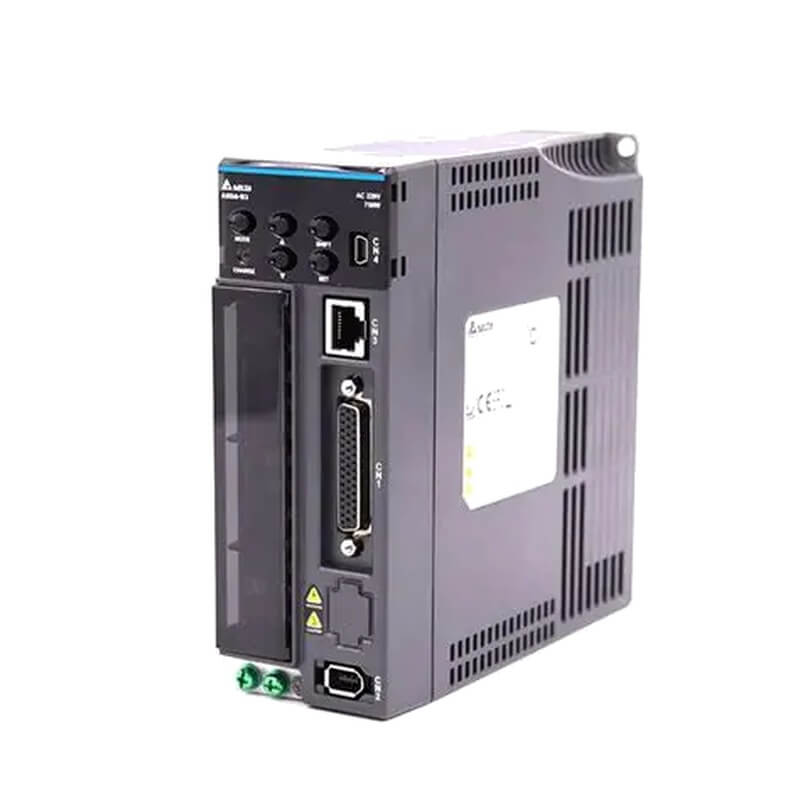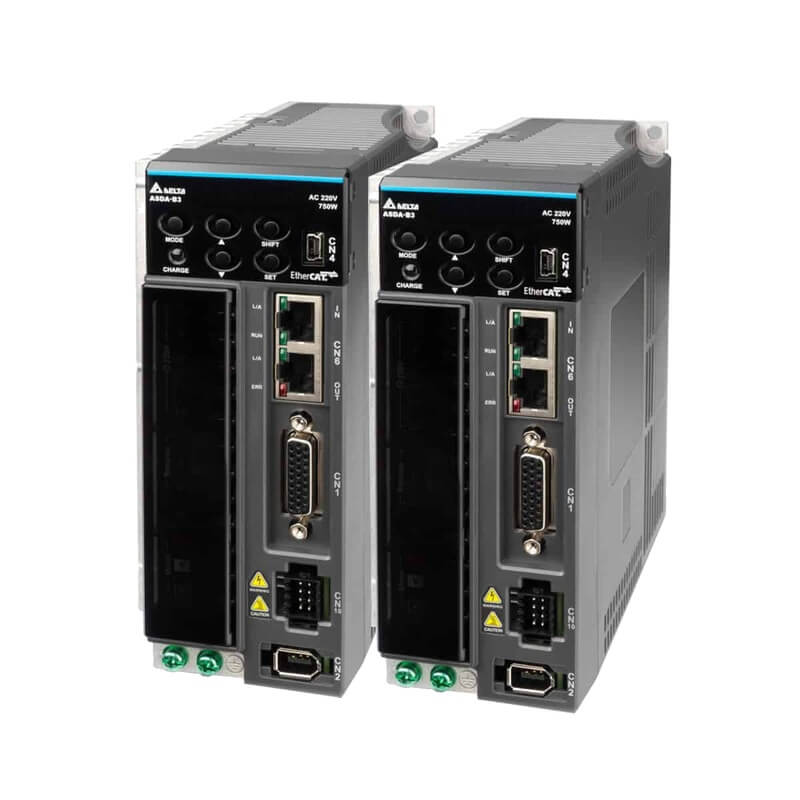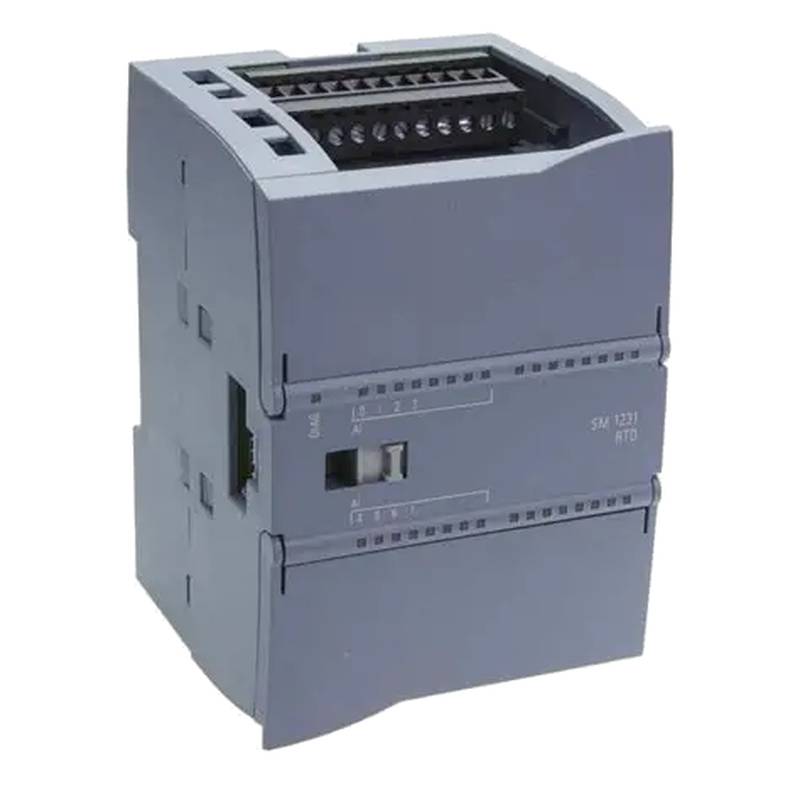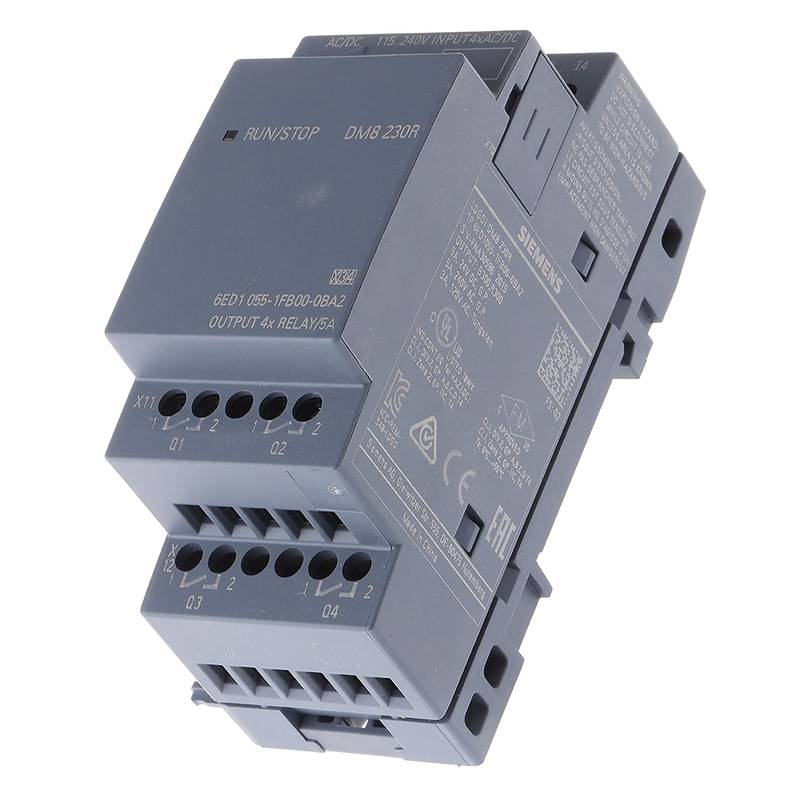
The Siemens 6ES7288-3AE04-0AA0 is a high-performance 4-channel analog input module designed for the SIMATIC S7-200 SMART automation system. This module excels in providing precise and reliable data acquisition for a wide array of industrial processes. Its key advantages include exceptional accuracy, robust design for harsh environments, and seamless integration within the S7-200 SMART platform. Crucial technical parameters include a resolution of 13 bits, an input range of 0 to 10V, and a conversion time of 2.5 ms per channel, ensuring timely and detailed process monitoring.
Product Specifications
| Feature | Specification |
| :------------------- | :------------------------------------------ |
| Product Type | Analog Input Module |
| Siemens Order Number | 6ES7288-3AE04-0AA0 |
| Channels | 4 |
| Input Type | Voltage |
| Input Range | 0 to 10V DC |
| Resolution | 13 bits |
| Conversion Time | 2.5 ms per channel |
| Interface | SM (Signal Module) for S7-200 SMART CPU |
| Accuracy | ±0.5% of full scale |
| Isolation | None |
| Power Consumption | Typically 0.3 W |
| Ambient Temperature | 0°C to 55°C (32°F to 131°F) |
| Dimensions (W x H x D) | 45 mm x 81 mm x 62 mm |
| Protection Rating | IP20 |
Core Features & Market Positioning
The Siemens 6ES7288-3AE04-0AA0 stands out in the competitive landscape due to its specialized design for the S7-200 SMART family, offering a cost-effective yet powerful solution for analog signal acquisition. Its 13-bit resolution provides a significant advantage over lower-resolution modules, enabling finer process control and more detailed data analysis. This precision is critical for applications demanding tight tolerances and accurate feedback loops. The module's robustness, typical of Siemens industrial automation components, ensures reliable operation even in demanding factory floor conditions, positioning it as a dependable choice for system integrators and end-users prioritizing uptime and data integrity.
Key Application Scenarios
This analog input module is ideally suited for process industries where precise measurement of voltage signals is paramount. Common applications include temperature monitoring using RTDs or thermocouples converted to voltage signals, pressure sensing for process control, level measurement in tanks, and flow rate monitoring in fluid dynamics systems. Its four channels allow for simultaneous monitoring of multiple process variables, making it efficient for applications in water treatment, chemical processing, food and beverage production, and general manufacturing automation. The module’s ability to integrate seamlessly with the S7-200 SMART CPU simplifies development for these diverse industrial use cases.
Practical System Integration Guidance
Integrating the 6ES7288-3AE04-0AA0 into an S7-200 SMART system is straightforward. The module snaps directly onto the base S7-200 SMART CPU or an expansion unit. Wiring involves connecting the 0-10V analog signals from sensors to the module's input terminals (I+, I-). It is crucial to ensure proper grounding of the signal source to minimize noise interference. In the STEP 7-Micro/WIN programming software, the module is automatically recognized, and its input data can be accessed via specific I/O addresses. Configuration typically involves setting the input range if other options were available, but for the 0-10V version, it's often plug-and-play.
Operation and Risk Mitigation
Operating the Siemens 6ES7288-3AE04-0AA0 requires adherence to standard industrial electrical safety practices. Ensure power is disconnected before installation or wiring. The module's IP20 protection rating means it is protected against solid objects larger than 12.5 mm but is not protected against water ingress, necessitating installation in a control cabinet. While this module has no specific fault codes documented, common troubleshooting steps for analog inputs include verifying sensor functionality, checking wiring integrity, ensuring the signal source is within the 0-10V range, and confirming correct addressing in the PLC program. If readings are erratic, environmental electrical noise might be a factor, requiring shielded cables and proper grounding.
Scalability & Long-Term Value
The 6ES7288-3AE04-0AA0 offers excellent long-term value by being part of the established Siemens SIMATIC ecosystem. Its integration with the S7-200 SMART platform allows for straightforward expansion by adding more I/O modules or upgrading to more powerful S7 controllers as process demands evolve. The module's reliable performance and Siemens' commitment to product longevity ensure that systems built with this component can operate efficiently for years. While not directly an IIoT device, its data can be easily communicated via the S7-200 SMART's communication capabilities (e.g., Ethernet) to higher-level SCADA or MES systems, enabling its participation in digital transformation initiatives.
Frequently Asked Questions
1. What is the primary function of the Siemens 6ES7288-3AE04-0AA0?
Its main purpose is to convert analog voltage signals from sensors into digital data for the S7-200 SMART PLC. This allows the controller to read physical process values. It handles four independent analog inputs simultaneously.
This module is crucial for precise process monitoring and control in various industrial automation applications. It bridges the gap between the physical world and the digital logic of the PLC.
The accurate conversion enables sophisticated control algorithms and detailed data logging for analysis and optimization.
2. What are the input voltage range and resolution of this module?
The module accepts an input voltage range of 0 to 10V DC. This is a standard range for many industrial sensors.
It offers a resolution of 13 bits, providing a high level of detail in the analog-to-digital conversion. This means more nuanced readings.
A 13-bit resolution allows for 2^13 = 8192 discrete steps within the 0-10V range. This translates to very small voltage changes being detectable.
3. Can the Siemens 6ES7288-3AE04-0AA0 be used with PLC models other than S7-200 SMART?
No, this specific module is designed exclusively for the SIMATIC S7-200 SMART automation system. It utilizes a proprietary interface for direct connection.
Its form factor and communication protocol are tailored to fit and interact with S7-200 SMART CPUs and expansion units. Compatibility is limited to this series.
Attempting to use it with other Siemens PLC families or third-party controllers will result in a lack of communication and system failure.
4. How is the analog input module wired for a 0-10V signal?
Each of the four channels requires a connection for the positive (+) and negative (-) terminals of the 0-10V signal. Connect the sensor's output to the designated input terminals.
Proper grounding of the sensor and signal cables is essential to prevent electrical noise from affecting the accuracy of the readings. Use shielded twisted-pair cables.
Refer to the S7-200 SMART system manual for the specific terminal layout and recommended wiring practices for analog input modules.
5. What are the typical applications for the 6ES7288-3AE04-0AA0?
It is commonly used for monitoring process variables like temperature, pressure, and level. These are often converted to 0-10V signals by sensors.
Applications span industries such as water treatment, chemical processing, and manufacturing, where precise analog data is needed. It facilitates automated responses to changing conditions.
The module is suitable for any scenario requiring accurate measurement and digital representation of physical quantities that can be represented as a voltage.
6. What is the conversion time of this Siemens analog input module?
The conversion time for each channel is 2.5 milliseconds. This indicates how quickly the module reads and digitizes an incoming analog signal.
A faster conversion time allows for more responsive control loops and better capture of transient process events. It’s crucial for dynamic systems.
This speed is generally sufficient for most standard industrial control applications, ensuring near real-time data acquisition.
7. Does this module require external power, or is it powered by the S7-200 SMART CPU?
The module draws its operating power directly from the S7-200 SMART CPU or expansion unit it is connected to. It does not typically require a separate external power supply.
The power consumption is minimal, around 0.3W, which is well within the power budget of the S7-200 SMART system. Check the manual for exact figures.
This integrated power design simplifies wiring and reduces the overall footprint and complexity of the control system installation.
8. How do I configure this module in the programming software?
The Siemens 6ES7288-3AE04-0AA0 is typically recognized automatically by the STEP 7-Micro/WIN software when the module is physically connected to the CPU.
You access its input values through specific memory addresses within the PLC program. These addresses correspond to the digital representation of the analog signals.
Basic configuration is minimal, primarily involving the use of the input data in ladder logic or other programming languages to implement control strategies.
9. What is the accuracy of the analog measurements provided by this module?
The module boasts an accuracy of ±0.5% of the full-scale range. This means for a 0-10V range, the maximum error is ±50mV.
High accuracy is vital for applications requiring tight control and precise process adherence. It minimizes deviations between the measured value and the actual process variable.
This level of accuracy is suitable for a wide range of critical industrial measurements where slight variations can have significant consequences.
10. What kind of protection does the 6ES7288-3AE04-0AA0 offer against environmental factors?
The module has an IP20 protection rating, indicating it is protected against solid objects larger than 12.5mm and offers no protection against water.
It is designed for installation within a control cabinet, which provides the necessary environmental protection from dust, moisture, and physical contact.
Users must ensure the control cabinet is adequately sealed and environmentally controlled for optimal module performance and longevity.

























